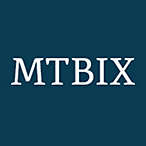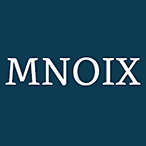Why Now
Why Now
An Attractive Entry Point for Muni Investors
History has shown that drawdowns have set the stage for a positive total return experience.
Liquidity Management Today
The municipal bond market has long been fragmented, complex, and less liquid than other fixed income markets. Active management may capitalize on the inefficiencies created by those conditions.
Featured Resources
View All Municipal Bond Resources
Revenue Collections and the Municipal Market

Liquidity Management: More Critical than Ever

Spotlight on Muni Bond ETFs

Municipal Market Update with MacKay Municipal Managers
Muni 360
Muni 360
State by State Breakdown
Use this interactive tool for key statistics that summarize each state's municipal profile.
Muni 360 Report
Get a comprehensive view into the municipal market alongside insights from MacKay Municipal Managers.

MacKay Municipal Managers
MacKay Municipal Managers
MacKay Municipal Managers™
The Minds Behind Munis
The experience of a large firm. The approach of a nimble, autonomous boutique. Plus, fund managers with a personal touch and a track record of success. All of which means we have the insights, experience and solutions you need to help take advantage of the municipal bond market. A recognized leader in active municipal bond investing, the team at MacKay Municipal Managers averages over 20 years of industry experience, and its Co-CIOs have worked together since 1993.

John Loffredo
Vice Chairman

Robert DiMella
Executive Managing Director
Asset Allocation Guides
Asset Allocation Guides
For Advisors Only
MacKay Municipal Managers provides its municipal bond asset allocation portfolios for investors seeking to construct blended exposures. For Financial Advisors looking to build their clients’ portfolios, download our Municipal Bond Asset Allocation Guide.
Investors, please inquire about our guide with your financial advisor.
The Asset Allocation Guides provide financial advisors and their clients with a framework that incorporates the related concepts of investor objectives and relative risk. This should be viewed in the context of a starting point in the conversation that takes place between the advisor and the client.
What’s Your Risk Tolerance?
Download the guides for more details, including suggested allocations for Conservative and Aggressive investors.

Solutions
Solutions
Explore Our Award-winning Municipal Bond Solutions

Our Municipal Suite of Solutions
Performance data quoted represents past performance. Past performance is no guarantee of future results. Due to market volatility, current performance may be less or higher than the figures shown. Investment return and principal value will fluctuate so that upon redemption, shares may be worth more or less than their original cost. Performance figures for all Funds reflect contractual waivers and/or expense limitations, without which total returns may have been lower. These limitations may be modified or terminated only with Board approval.
Click on the product name for the most recent overall risk-adjusted Morningstar ratings shown above, including ratings by share class and time period and the number of funds in each category. The Fund page also includes the prospectus, investment objectives, performance, risk and other important information.
The Morningstar Rating™ for funds, or "star rating", is calculated for managed products (including mutual funds, variable annuity and variable life subaccounts, exchange-traded funds, closed-end funds, and separate accounts) with at least a three-year history. Exchange-traded funds and open-ended mutual funds are considered a single population for comparative purposes. It is calculated based on a Morningstar Risk-Adjusted Return measure that accounts for variation in a managed product's monthly excess performance, placing more emphasis on downward variations and rewarding consistent performance (this does not include the effects of sales charges, loads, and redemption fees). The top 10% of products in each product category receive 5stars, the next 22.5% receive 4 stars, the next 35% receive 3 stars, the next 22.5% receive 2 stars, and the bottom 10% receive 1 star. The Overall Morningstar Rating for a managed product is derived from a weighted average of the performance figures associated with its three-, five-, and 10-year (if applicable) Morningstar Rating metrics. The weights are: 100% three-year rating for 36-59 months of total returns, 60% five-year rating/40% three-year rating for 60-119 months of total returns, and 50% 10-year rating/30% five-year rating/20% three-year rating for 120 or more months of total returns. While the 10-year overall star rating formula seems to give the most weight to the 10-year period, the most recent three-year period actually has the greatest impact because it is included in all three rating periods.
National and State-specific Strategies Across the Income and Risk Spectrum

This is a hypothetical illustration showing relative potential risk and yield. Risk based on standard deviation. *National muni tax-equivalent yield based on 40.80% tax level (37% highest federal tax bracket plus the 3.8% Medicare surcharge). CA and NY muni tax equivalent yield based on the blended rates derived from a top federal income tax rate of 37%, the 3.8% Medicare tax, top state income tax rates of 8.82% and 13.30% in New York and California, respectively. Past performance is no guarantee of future results, which will vary. All mutual funds are subject to market risk and will fluctuate in value. Corporate High Yield Bonds index is represented by the Bloomberg Barclays High-Yield Corporate Bond Index. The U.S. Corporate bond index is represented by the Bloomberg Barclays U.S. Corporate Bond Index. The U.S. Treasury index is represented by the Bloomberg Barclays U.S. 1-3 Year Government/Credit Index. The U.S. Aggregate bond index is represented by the Bloomberg Barclays U.S. Aggregate Bond Index.
Insights
Insights
Historical Top 5 Muni Market Insights

2021 Municipal Bond Market Insights

2020 Municipal Bond Market Insights

2019 Municipal Bond Market Insights

2018 Municipal Bond Market Insights

2017 Municipal Bond Market Insights

2016 Municipal Bond Market Insights

2015 Municipal Bond Market Insights

2014 Municipal Bond Market Insights

2013 Municipal Bond Market Insights

2012 Municipal Bond Market Insights

2011 Municipal Bond Market Insights
Bloomberg High-Yield Corporate Bond Index is a rules-based, market-value-weighted index engineered to measure publicly issued non-investment grade USD fixed-rate, taxable and corporate bonds. Bloomberg U.S. Corporate Bond Index measures the investment grade, fixed-rate, taxable corporate bond market. It includes USD denominated securities publicly issued by U.S. and non-U.S. industrial, utility and financial issuers. Bloomberg U.S. 1-3 Year Government/Credit Index includes investment-grade corporate debt issues as well as debt issues of U.S. government agencies and the U.S. Treasury, with maturities of one to three years. Index results assume the reinvestment of all capital gain and dividend distributions. Bloomberg U.S. Aggregate Bond Index is a broad-based benchmark that measures the investment-grade, U.S. dollar-denominated, fixed-rate taxable bond market, including Treasuries, government-related and corporate securities, mortgage-backed securities (agency fixed-rate and hybrid adjustable-rate mortgage pass-throughs), asset-backed securities, and commercial mortgage-backed securities.
The Morningstar Analyst Rating is not a credit or risk rating. It is a subjective evaluation performed by the manager research analysts of Morningstar. Morningstar evaluates funds based on five key pillars, which are process, performance, people, parent, and price. Analysts use this five pillar evaluation to determine how they believe funds are likely to perform over the long term on a risk-adjusted basis. They consider quantitative and qualitative factors in their research, and the weighting of each pillar may vary. The Analyst Rating scale is Gold, Silver, Bronze, Neutral, Negative. A Morningstar Analyst Rating of Gold, Silver, or Bronze reflect an Analyst’s conviction in a fund’s prospects for outperformance. Analyst Ratings are continuously monitored and reevaluated at least every 14 months.
Silver Morningstar Analyst Rating: Fund with advantages that outweigh the disadvantages across the five pillars and with a sufficient level of analyst conviction to warrant a positive rating.
For more detailed information about Morningstar’s Analyst Rating, including its methodology, visit http://corporate.morningstar.com/us/documents/MethodologyDocuments/AnalystRatingforFundsMethodology.pdf.
The Morningstar Analyst Rating should not be used as the sole basis in evaluating a mutual fund. Morningstar Analyst Ratings involve unknown risks and uncertainties which may cause Morningstar’s expectations not to occur or to differ significantly from what we expected.
Active management is the use of a human element, such as a single manager, co-managers or a team of managers, to actively manage a fund’s portfolio. Active management strategies typically have higher fees than passive management.
Please note that not all products may be available for sale to all registered representatives and agents. Please consult your firm guidelines. Please note that not all products may be available for sale to all registered representatives and agents. Please consult your firm guidelines.














